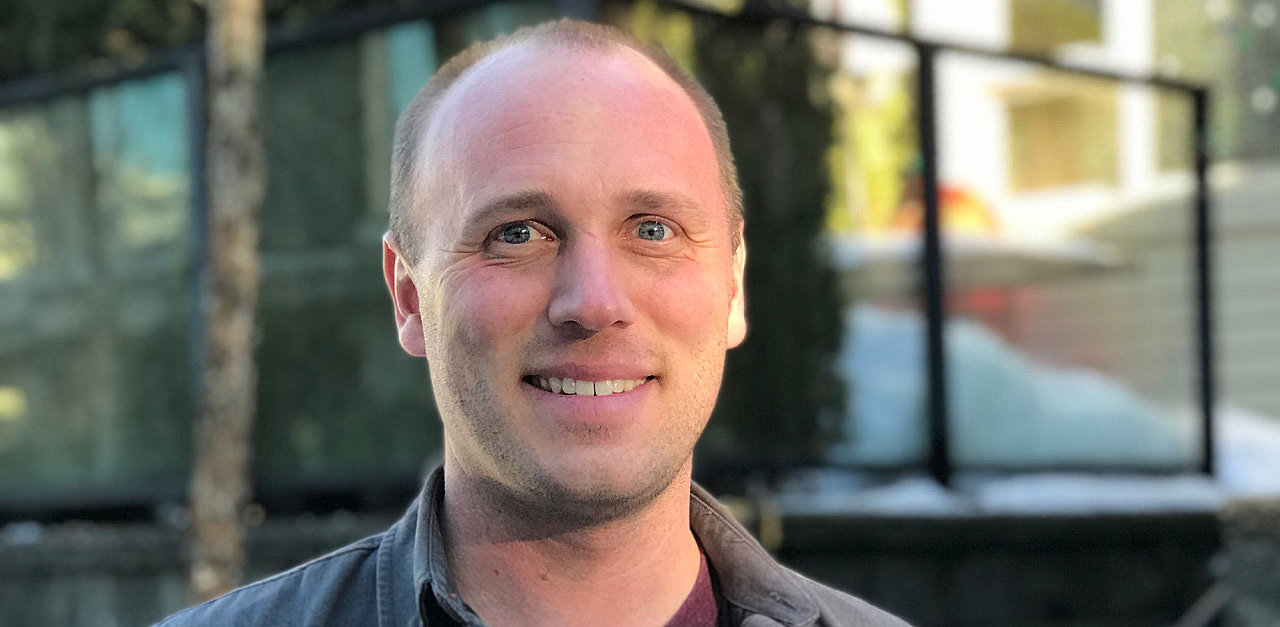Interview with Shawn Sederberg
Shawn Sederberg becomes a tenure-track professor at Simon Fraser University in Canada. After leaving our attosecond metrology 2.0 group in 2017, he did research in Paul Corkum's group at the University of Ottawa. Here he talks about his plans at the new university, which phenomena in ultrafast physics excite him most and how life is in Canada.
What brought you to Canada?
I grew up in Canada and, with the exception of my time in Garching, I’ve lived here for my entire life. I had an excellent experience in Germany, but there was a strong family pull to return to western Canada. In the research world, it’s rare to find a position that brings you close to home. For us, Ottawa was the first step towards home, where I was able to broaden my research experience, and the move to greater-Vancouver finally brings us close to family.
What phenomena excite you most in ultrafast physics?
I’m most excited about steering and measuring sub-cycle quantum electronic processes in emerging materials and nanophotonic devices. At a time when ultimate control over matter (e.g. quantum matter, metasurfaces) plays a dominant role in tailoring light-matter interaction, I’m very curious to see how sub-cycle electronic processes can be influenced by light sources offering new degrees of freedom. In ultrafast and strong-field physics, we focus predominantly on the interaction of the electric field of light with matter. Light has other exciting features, such as its magnetic field, its orbital angular momentum and its spatial structure. Brief and strong magnetic fields have been very difficult to generate and, as a result, relatively little is known about magnetization dynamics under these conditions. While there is perfect overlap between electric and magnetic fields in conventional Gaussian laser beams, this is not always the case with structured light beams, and they could potentially be applied in this direction. Selection rules determine properties of excited electrons, such as their spin and valley degrees of freedom. I’m excited about the possibility of coherently controlling these properties using the OAM of light. Finally, I’m intrigued by large quantum systems and whether their wavefunction can be shaped using the spatiotemporal structure of light.
What plans do you have in your new position at Simon Fraser University?
I’ve had the opportunity to work with light in several extremes – on nanometer length scales, on attosecond timescales, and with pronounced spatial structure. I plan to build a light source that combines technologies developed by the structured light and attosecond metrology communities. I was very impressed by the development of lightwave synthesizers (LWS) at MPQ. I would like to build an LWS that includes structured light devices, with the ultimate goal of synthesizing single-cycle pulses with spatially isolated magnetic fields, programmable OAM, toroidal structure, and more. I would like to apply this source to emerging material platforms, such as 2D materials, and to steer and measure electronic processes in real-time using conventional and structured light beams.
Where do you see attosecond physics in ten years?
I think it will be a time when attosecond physics undergoes considerable proliferation. As conventional attosecond techniques based on high-harmonic generation (HHG) have matured, we’ve witnessed a shift from atoms to more complex systems including molecules and solids as the subject of the measurement. We’ve also explored new platforms for attosecond metrology based on optoelectronic processes in solid-state materials, circumventing the conventional HHG process. Attosecond Metrology 2.0 has granted access to attosecond timescales without the need for extreme ultraviolet optics and vacuum chambers, relaxed the pulse energy requirements of the driving laser, opened up the possibility to probe systems at any optical wavelength, and improved the quality of the measured data. The reduced infrastructure requirements of Attosecond Metrology 2.0 will enable many more researchers from a broader array of disciplines to pursue attosecond metrology. Overall, the variety of target samples, the scope of measurements, and the physical insight gleaned will be greatly enhanced. The fact that these techniques and devices are based on solid-state platforms will also enable technological applications, including their integration with chip-scale photonic waveguide platforms.
Are there opportunities for graduates to do a PhD thesis or work as a postdoc in your team?
Absolutely! If anyone is interested in building something new, enjoys attosecond optoelectronics, and would like to learn more about structured light and quantum matter, they are welcome to contact me at shawn_sederberg@sfu.ca. I also hope to have a webpage up in the coming weeks with more information.
What is life like in Canada?
I’ve lived in the north, west and east of Canada, and each region is unique. People are generally pretty friendly everywhere in Canada. We have a relatively small population spread out over a huge country. This comes with two consequences – we have a lot of nature to enjoy and infrastructure is generally challenging. Things like telecommunications and transportation (particularly public transportation) are not as advanced as in Germany. However, most of Canada is sparsely populated and if you want to enjoy pristine nature and be kilometers away from the nearest person, it’s relatively easy. I feel that there is less public interest in research here than in Germany, so we don’t have anything comparable to the MPG and our technology industry is also limited. Similar to Munich, we have cities like Vancouver, that are regularly ranked quite high for their quality of living, and where world-class skiing and other outdoor activities are very accessible.
